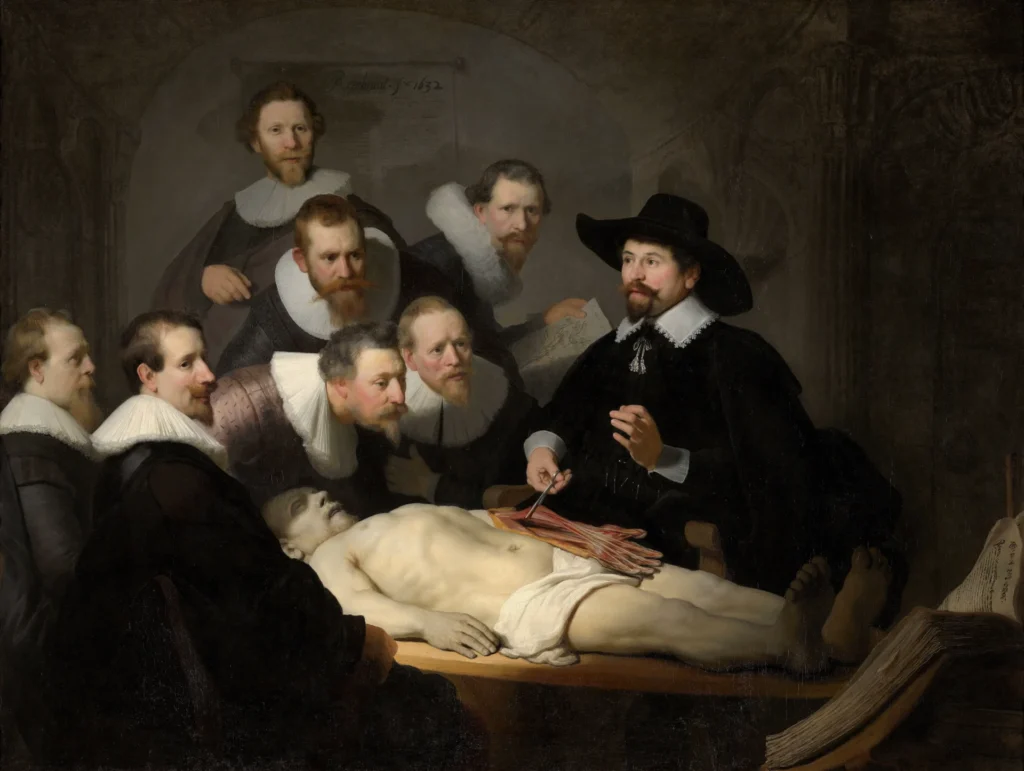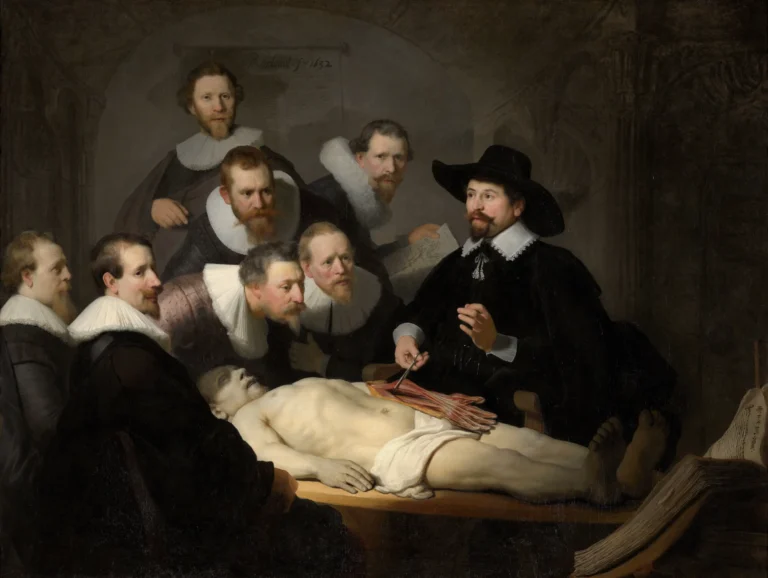The Anatomy Lesson of Dr. Nicolaes Tulp
Created in 1632, The Anatomy Lesson of Dr. Nicolaes Tulp showcases Rembrandt's mastery in group portraiture and chiaroscuro technique. Commissioned by the Amsterdam Surgeons Guild, this painting features Dr. Tulp conducting a public anatomy lesson surrounded by seven surgeons. The work is known for its dynamic composition, where figures are engaged uniquely, and its innovative depiction of anatomical details, despite some inaccuracies. A pivotal piece in Rembrandt's early career, it highlights the intersection of art and science and has influenced generations of artists.
Year 1632
About the Artwork
Commissioned to celebrate Dr. Tulp's public dissection, this piece marked Rembrandt's first major work in Amsterdam, showcasing his innovative artistic vision. Instead of a regal, static portrayal typical of group portraits, Rembrandt captured the individual personalities of the surgeons and their engagement in the lesson as they examined the muscular structure of the forearm. Utilizing chiaroscuro, he added emotional depth and drama to the scene. The cadaver of Aris Kindt serves as a grim reminder of morality and the implications of scientific exploration. This painting not only demonstrated Rembrandt's artistry but also reflected the educational aspirations of the time, setting a new benchmark in portraiture.
Did You Know
The cadaver in the painting belongs to Aris Kindt, who was executed for robbery on the same day. This choice adds a layer of moral reflection on criminality and its consequences, presenting dissection as both a scientific study and a form of societal judgment.
Unlike conventional group portraits of his time, which typically showcased static and formal arrangements, Rembrandt’s approach in this painting creates vibrant movement and interaction, influencing future artists towards dynamic configurations in group compositions.
The artwork features one of Rembrandt’s earliest signatures, ‘Rembrant. f[ecit] 1632.’ This new signature style reflected his evolving artistic confidence and was a marker of his burgeoning reputation in the Amsterdam art scene.










